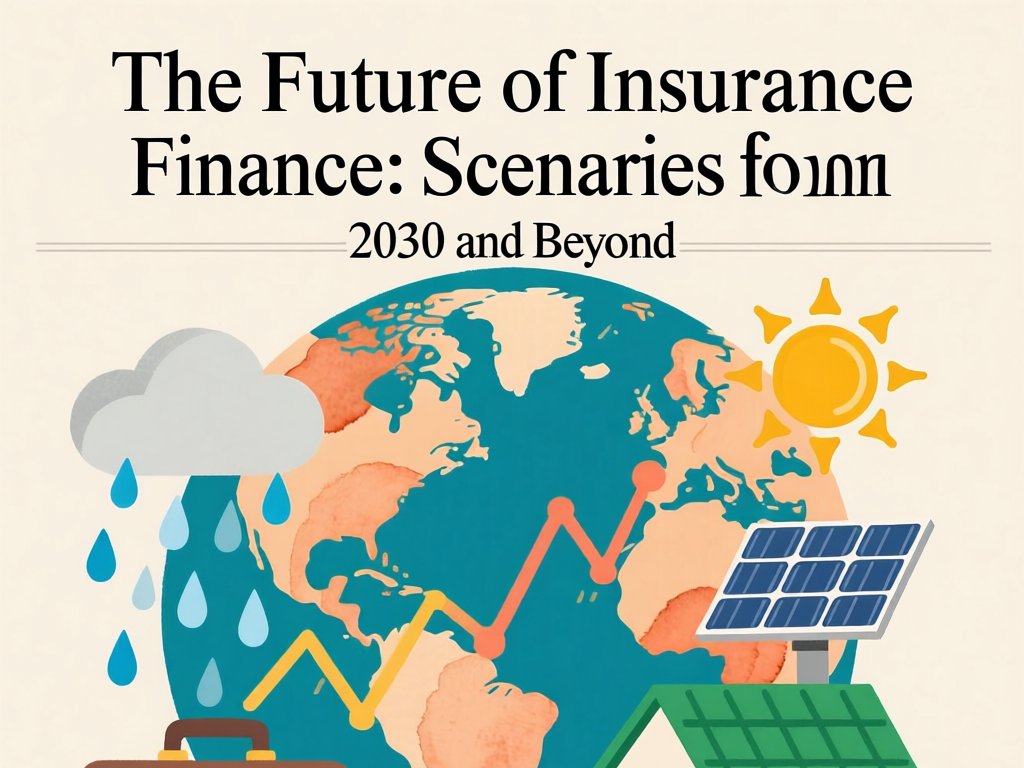
A Transformative Decade Ahead for Insurance Finance
The insurance industry stands at the edge of a major financial transformation. By 2030, advancements in technology, shifts in consumer behavior, climate risks, and evolving regulatory landscapes will redefine how insurers manage capital, price risk, and deliver value. Insurance finance—the backbone of solvency, investment strategy, and profitability—is evolving rapidly. Understanding the likely scenarios for the next decade is essential for stakeholders across the financial ecosystem, from insurers and investors to regulators and policyholders.
Scenario 1: Data-Driven Risk Pricing Becomes Standard
By 2030, data will be the most valuable asset in insurance finance. Insurers will leverage real-time data from IoT devices, wearables, connected vehicles, and smart infrastructure to assess risk with unprecedented precision. Traditional actuarial models will be enhanced with machine learning algorithms that continuously update risk profiles. This shift will lead to hyper-personalized pricing, where premiums reflect actual behavior rather than broad demographic categories. As a result, capital allocation will become more efficient, loss ratios will improve, and underwriting profitability will rise.
Scenario 2: Climate Risk Integration Reshapes Investment and Underwriting
Climate change will no longer be a peripheral concern—it will be central to insurance finance. By 2030, insurers will be required to disclose climate-related financial risks in line with global standards such as TCFD (Task Force on Climate-related Financial Disclosures). Investment portfolios will be stress-tested against climate scenarios, and underwriting guidelines will exclude high-carbon or climate-vulnerable assets. Insurers will shift capital toward green bonds, sustainable infrastructure, and climate adaptation projects. This transition will not only reduce exposure to physical and transition risks but also open new revenue streams in green insurance and resilience financing.
Scenario 3: Embedded Insurance Drives New Revenue Models
Insurance will become increasingly invisible—seamlessly integrated into digital platforms, e-commerce transactions, and lifestyle services. By 2030, embedded insurance will be a major growth driver, with coverage automatically offered at the point of sale for travel, gig work, rentals, and on-demand services. For insurers, this means a shift from product-centric to ecosystem-based revenue models. Partnerships with fintechs, retailers, and tech platforms will generate recurring income streams through micro-premiums and usage-based policies. Financial success will depend on scalability, low-cost distribution, and real-time claims automation.
Scenario 4: Capital Models Adapt to Systemic and Pandemic Risks
The financial shocks of the past decade—pandemics, cyberattacks, supply chain disruptions—have revealed the limitations of traditional risk pooling. By 2030, insurers will adopt more sophisticated capital models that account for systemic, interconnected risks. Catastrophe bonds, industry loss warranties, and public-private risk pools will become standard tools for managing tail events. Regulators will push for greater transparency in capital adequacy, especially for cyber and biological risks. Insurers with agile capital structures and diversified reinsurance strategies will gain a competitive advantage.
Scenario 5: AI and Automation Redefine Financial Operations
Artificial intelligence will transform the back office as much as the customer experience. By 2030, AI-driven financial operations will be the norm across claims processing, fraud detection, investment management, and regulatory reporting. Automated reconciliation, predictive cash flow modeling, and intelligent auditing will reduce operational costs and improve accuracy. CFOs and financial officers will rely on AI-powered dashboards for real-time decision-making, scenario planning, and dynamic capital optimization. The finance function will shift from compliance and reporting to strategic value creation.
Scenario 6: Customer-Centric Finance Models Emerge
The future of insurance finance will be shaped by changing customer expectations. Policyholders will demand transparency, fairness, and shared value. Profit-sharing models, loyalty dividends, and usage-based refunds will gain traction, especially in personal lines. Insurers may offer cashback for safe driving, wellness incentives, or carbon reduction achievements. These models will improve customer retention and brand trust, while also aligning financial outcomes with positive behavioral outcomes.
Regulatory Evolution and Global Coordination
As the industry transforms, regulators will play a critical role in shaping the financial landscape. Solvency frameworks like Solvency II will evolve to reflect new risks and business models. Cross-border data sharing, digital asset regulations, and ESG compliance will require greater international coordination. Insurers that proactively align with regulatory trends will avoid penalties and gain access to global markets, while laggards may face capital constraints or reputational damage.
Conclusion: Preparing for a Dynamic Financial Future
The future of insurance finance is not a single destination—it is a range of possible paths shaped by innovation, risk, and societal change. By 2030, insurers that embrace data, sustainability, automation, and customer-centric models will lead the industry. Financial resilience will no longer come from size alone, but from agility, foresight, and strategic alignment with global trends. For finance leaders, the time to act is now. The decisions made today will determine who thrives in the next era of insurance.